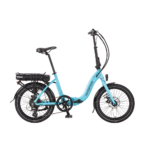Indeed, something does not compute here the single speed track bikes in the Olympics all use the latest high tech design and materials yet they stick with chain...I've also read about some of the human powered aircraft use some sort of plastic chain because of better efficiency. Belts have to be at a higher tension with causes more friction a correctly aligned chain with tension wheel should be more efficient...I note in that report the chains seemed to be under tension with no idler sprocket to take up slack.
Cycle sport has a rule for just about everything and there is probably a rule which tells them what the drivetrain has to be made of, what weight and what size. Technical advances in cycling are very much about how to push the rule envelope and not all out tech advancement. It's a shame as I think it holds back cycle development but I guess without the heavy rules the team with the biggest wallet would always win like they did in F1 a while back.
There are lots of benefits to a belt drive, more for motorbikes really as unsprung weight is important there. Lower inertial mass to aid acceleration, cleaner, lower maintenance, a belt won't cause as much damage if it snaps.
One big disadvantage that I still see is when debris starts flying around, a chain will just shake off most dirt or stones but a belt can get thrown much more easily. Buell had this problem racing their motorbikes on a racetrack, go off road and it's going to get worse.
Another big reason racers don't use belts is they are a fixed length, with a chain the rear sprocket can be changed easily as conditions require. For the track cyclists there might be a problem with needing a split frame to fit a belt.
I'd happily believe that belt and chain drives are equally efficient and it's the other design considerations (adjustable length, robustness, weight, cost, fashion etc) that will decide the drive type rather than the designer flipping a coin to see what he picks.








